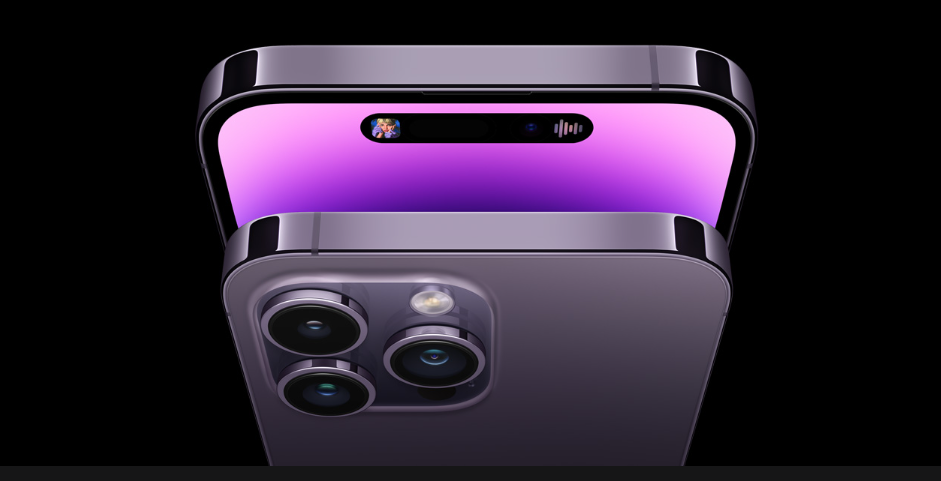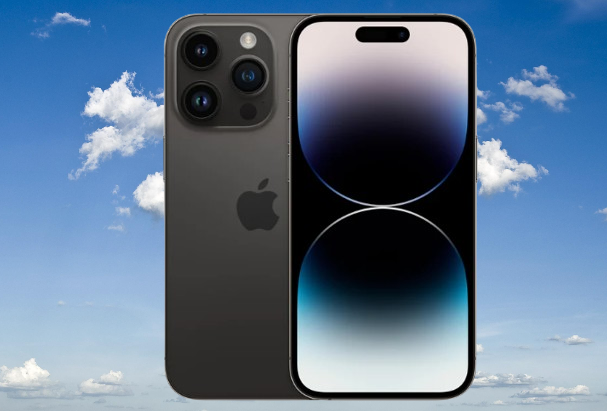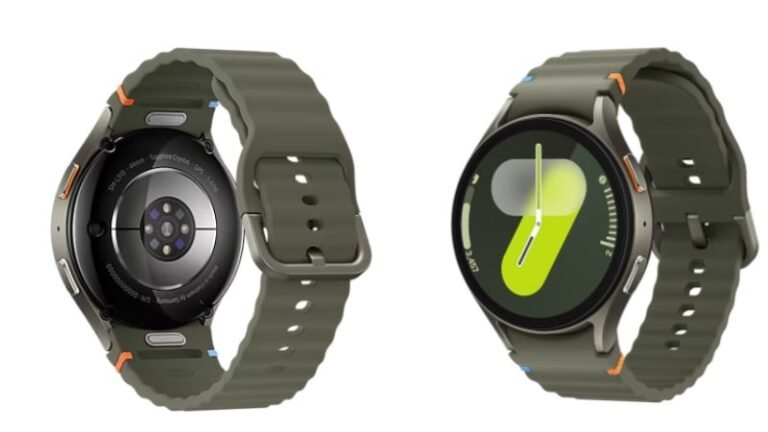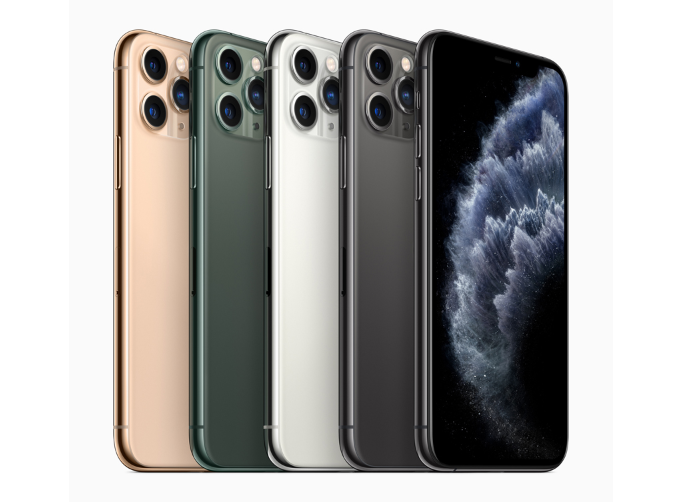Apple iPhone 14 Pro review
Apple pleasantly surprised everyone with the iPhone 14 Pro, unveiling some exciting new features. While rumors hinted at changes like a different design for the front camera and Face ID system, Apple took it a step further by introducing the innovative “Dynamic Island” alert system.
Moreover, they revamped the camera system with the introduction of the Photonic Engine, promising exceptional photography experiences. Priced at $999 in the United States, the iPhone 14 Pro offers great value for its array of new features. Additionally, enhancements such as a brighter always-on display and exclusive eSIM support further elevate its appeal.
Apple iPhone 14 Pro review
Apple even introduced a satellite connection feature, adding an entirely new dimension to smartphone capabilities. While the iPhone 14 Pro may not be flawless, it undoubtedly marks a significant step toward innovation for both Apple and the iPhone platform.
I must admit, the name “Dynamic Island” has grown on me. It has sparked discussions, which is unusual for a smartphone feature like a status indicator. If Apple intends to explore more innovative smartphone interface concepts, count me in.
This “island” replaces Apple’s infamous notch, housing the front camera and Face ID components. Unlike the notch, which tends to fade into the background during use, the island is meant to be noticed. Positioned lower on the screen, it stands out with its black pill shape against a white background in light mode.
Its constant animation ensures you’ll always see it, making it more prominent than the notch. Interestingly, it blends better in dark mode, enhancing the overall user experience.
Apple’s decision to transform the subtle notch into a more prominent island begs the question: why the change? Over the years, iOS has seen various status indicator systems added to its interface. Plugging in a charger or toggling the mute switch triggers an overlay. Incoming calls are denoted by a green pill in the corner, while apps using location services display a blue pill.
Screen recording and personal hotspot activities are indicated by pills on the opposite side. Connecting AirPods prompts another overlay. However, some functions, such as timers and background music playback, lack effective status indicators altogether.
The island serves as Apple’s solution to replace and consolidate older status systems, offering a new platform for system alerts. Additionally, it’s designed to accommodate features like music control and the forthcoming live activities API in iOS 16. This API will enable apps to share background information, such as flight statuses or sports scores. Importantly, the island doesn’t replace notifications, which continue to appear in the notification center unchanged.
Essentially, the island functions as a new widget system leveraging the live activities API. Widgets can adopt three views: the primary view within the island, an expanded view, and a minimal icon when multitasking. If multiple activities are ongoing, Apple employs an internal priority list to display the two most significant ones on the island.
While the concept is promising, being a first iteration, Apple’s implementation includes both effective choices and areas for improvement typical of initial releases.
One significant success is Apple’s approach of imbuing the island with a hardware-like feel, reminiscent of classic Apple design ethos. It’s intended to resemble a secondary display that can dynamically adjust its size. To achieve this effect, Apple developed a new dynamic subpixel antialiasing system, enhancing the island’s edges to be up to three times sharper than other iOS animations. Under normal lighting conditions, this creates an immersive experience where the island appears to expand and contract seamlessly, accompanied by engaging animations. (However, under sunlight or brighter lighting, the camera sensors become visible, disrupting the illusion, although the effect remains impressive.)
Another notable success is the consolidation of various status indicators onto the island, making them more prominent and useful. Having call information and timers readily visible on the screen enhances user convenience. Furthermore, standardizing the presentation of features like AirDrop and Face ID in a consistent location improves user comprehension, simplifying the overall experience.
However, where Apple may have fallen short is in the portrayal of the island’s interaction capabilities. While the keynote and advertisements depict the island as highly interactive, seamlessly transitioning between the main and expanded views, real-world usage doesn’t quite align with this portrayal.
The island serves as an overlay on top of the app you’re currently using, emphasizing that apps remain the primary focus of the iPhone experience. Interestingly, tapping on the island doesn’t trigger the expanded widget view as one might expect; instead, it simply returns you to the controlling app. To access the expanded widget showcased in advertisements, you need to perform a tap-and-hold gesture. This implementation feels counterintuitive to many users, myself included. Ideally, tapping should directly open the widget, and users should have the option to choose between these interaction behaviors.
This underscores the central dilemma of the island: while it offers enhanced visibility and utility compared to the notch, it’s primarily intended to provide background information rather than direct interaction. Activities like playing music, activating a personal hotspot, or connecting a charger are functionalities that typically don’t require frequent user intervention. Despite concerns about potential interference from fingerprints on the selfie camera, the limited need for interaction with the island mitigates this issue.
The Dynamic Island presents a promising concept that requires further refinement and attention from developers before its true significance can be determined. Despite its prominent visibility due to animations, users may find themselves frequently glancing at it. In apps that haven’t been optimized for the island, it can obstruct content as it occupy a lower portion of the display. Currently, the balance between the island’s visibility and its utility feels somewhat skewed—it doesn’t consistently offer enough value to justify its constant presence.
However, this dynamic may shift once the live activities API becomes available later this year. Apple’s decision to provide developers with the necessary tools to integrate the island into their apps is commendable, and early glimpses of concepts from companies like Lyft and Flighty are promising. Nonetheless, at present, Dynamic Island appears to be a feature in need of refinement and further exploration by developers before its true significance can be fully realized.

The standout feature of the iPhone 14 Pro camera system is its new 48-megapixel main camera sensor. Apple may be a few years behind on this trend, as Samsung introduced 108-megapixel sensors in its S20 Ultra back in 2020, and Google incorporated a 50-megapixel sensor into the Pixel 6 Pro last year. Despite this, Apple has also made updates to the ultrawide and 3x telephoto cameras, which remain at the standard 12 megapixels. However, the focal point is undoubtedly the new main sensor.
The underlying principle is consistent across the board: to capture better photos, it’s essential to gather as much light as possible, necessitating larger pixels. However, there comes a point where enlarging the pixels physically becomes challenging. Instead, the approach involves adding numerous physical pixels on a large sensor and employing software to group them into large virtual pixels. This technique, known as pixel binning, simplifies the process. Apple’s implementation of binning involves combining four pixels to create a single virtual pixel, resulting in the iPhone 14 Pro’s 48-megapixel sensor primarily capturing 12-megapixel photos.
Another significant change to the iPhone 14 Pro’s camera system is Apple’s implementation of its Deep Fusion processing for mid- and low-light photos earlier in the process, utilizing uncompressed image data. This adjustment aims to enhance low-light performance by two to three times, depending on the camera being used. Consequently, Apple rebranded the entire image processing pipeline as the “Photonic Engine.” While Apple continues to employ Smart HDR and other familiar processing techniques, the Photonic Engine represents a noteworthy addition.
Traditionally dubbed “sweater mode,” Deep Fusion has been associated with moody photos captured in dim lighting, showcasing subtle effects. Similarly, on the iPhone 14 Pro, Deep Fusion processing on uncompressed data retains its characteristic subtlety. In practice, both the iPhone 14 Pro and its predecessor, the 13 Pro, produce remarkably similar photos. The 14 Pro exhibits a slightly cooler tone and captures marginally more detail in dim lighting at 100 percent magnification, although the difference is subtle. This similarity extends to the main camera and the ultrawide, the latter benefiting from a larger sensor this year and the Photonic Engine. While details from the ultrawide appear slightly better in very dim light at 100 percent compared to the 13 Pro, the variance is minimal and requires close inspection.
In well-lit conditions, photos taken with the iPhone 14 Pro are virtually indistinguishable from those captured with the 13 Pro. However, upon closer inspection at 100 percent magnification, the 14 Pro exhibits slightly more detail and a smoother background blur, attributed to its substantially larger sensor. While this enhancement is appreciable, particularly in larger formats, it may not be readily apparent in smaller, Instagram-sized images. Notably, the Pixel 6 Pro surpasses both iPhones in capturing detail with its pixel-binned 50-megapixel sensor and offering a broader color range.
Comparing night mode photos between the Pixel and the iPhone reveals distinct processing differences. While both devices excel in capturing detail and performing well in low-light conditions, the Pixel 6 Pro and iPhone 14 Pro exhibit divergent choices regarding highlights and shadows. The iPhone 14 Pro tends to allow highlights to blow out more readily and embraces vignetting to a greater extent. Ultimately, determining which device is “better” depends on subjective preferences, as both produce impressive results.
However, where the iPhone 14 Pro falls short in these comparisons lies in the nuances of its processing. Over the years, Apple has increased the amount of noise reduction and sharpening applied to photos, with the 14 Pro featuring the most aggressive sharpening and noise reduction yet. At times, this aggressive processing results in undesirable outcomes, evident in instances such as a night skyline shot that appears overprocessed compared to the Pixel.
When compared to the Samsung S22 Ultra, the iPhone exhibits a slightly less predictable performance. The S22 Ultra consistently retains more color detail in low-light conditions and employs less aggressive noise reduction and sharpening techniques. In brighter lighting scenarios, while the variances between the iPhone 14 Pro and the S22 Ultra are subtler, Samsung still outperforms in terms of detail rendition. True to Samsung’s signature style, images captured with the S22 Ultra boast punchier and warmer colors, contrasting with the iPhone’s more natural aesthetic. Samsung’s color rendition can sometimes feel as if it’s from a different universe altogether. On a per-photo basis, the S22 Ultra maintains greater consistency and finer detail.

Equipping the iPhone with a large sensor boasting numerous pixels unlocks additional capabilities. In addition to pixel binning, Apple utilizes cropping to create what it claims to be an “optical quality” 2x zoom. Essentially, this feature extracts the central 12 megapixels from the 48-megapixel sensor. While this represents a significant improvement over the 2x telephoto lens found in the iPhone 12 Pro from two years ago, it faces challenges in lower-light conditions due to the absence of pixel binning. Nevertheless, it serves as a useful middle ground between the standard wide and 3x telephoto options.
Interestingly, the 2x crop is also the default setting for portrait mode, although improvements in this area seem minimal. Both the S22 Ultra and even the regular S22 produce superior portrait photos, with Samsung excelling in accurately separating subjects from backgrounds down to individual strands of hair. In contrast, the iPhone 14 Pro falls short in this regard, occasionally resulting in imperfect portrait compositions, such as unintentional cropping.
Experimenting with ProRAW at 48 megapixels reveals an abundance of detail and ample room for post-processing. Enthusiasts of ProRAW photography will undoubtedly find the iPhone 14 Pro’s capabilities endlessly captivating. However, for the average user, capturing photos at such high resolutions may not be necessary or practical for everyday use.
Another notable enhancement is the addition of autofocus to the selfie camera, which offers potential utility in certain situations. However, in comparison to the 13 Pro, the differences in overall selfie quality are minimal, barely perceptible to the average user.
While things are still looking impressive, there’s not a significant leap over the already excellent iPhone 13 Pro. Here’s a rundown of the key points:
Cinematic mode, which received mixed reviews on the 13 Pro, has seen improvements on the 14 Pro. Apple has continued to refine the feature, resulting in better separation of faces from the background for more effective blur application. Additionally, it now supports 4K video resolution. However, Becca found that while it works well with faces, it struggles with other types of subjects.
The new Action mode introduces a stabilization system aimed at enabling users to capture smooth footage without the need for additional equipment like a gimbal. However, there are significant trade-offs involved. Action mode requires ample lighting to function properly, and there’s a substantial crop to the captured footage, which tops out at 2.8K resolution instead of 4K. While it’s enjoyable to experiment with, it feels like a feature that still needs refinement before becoming truly useful.
In terms of overall image quality, Becca notes that in good lighting conditions, it’s challenging to discern a difference between the footage captured by the 14 Pro and that of the 13 Pro. However, in low-light situations, the telephoto lens on the 14 Pro delivers a noticeably sharper image with less noise.
Despite the minor improvements, the iPhone continues to reign as the top contender for smartphone video capabilities, with the 14 Pro maintaining its position at the forefront. For a more in-depth look, be sure to watch the video; describing video features in writing is akin to expressing architecture through dance, after all.
At long last, Apple has introduced an always-on display mode with the iPhone 14 Pro, a feature that Android phones have boasted for quite some time now. While it’s a welcome addition, it’s not without its quirks. The display refresh rate drops to just one hertz, and the brightness dims significantly to conserve battery life. Apple has made efforts to ensure that wallpaper colors remain accurate in this low-power mode, but some users, myself included, would prefer a simpler black-and-white clock reminiscent of Pixel devices. Perhaps we’ll see more customization options in the future.
I had the opportunity to test the iPhone 14 Pro Max alongside Becca, while Allison Johnson tested the iPhone 14 Pro. While the battery life still lasted throughout the day, all three of us noticed a slight decrease in battery performance compared to previous models. Admittedly, we put these phones through rigorous testing, taking lots of photos and videos over the past week. Apple claims that the 14 Pro and Pro Max offer slightly better battery life than the 13 Pros, and while we all managed to get through a full day with the 14 Pro Max, perhaps the always-on display feature played a role in the battery drain. It’s something we’ll monitor over time.
Apart from the battery concerns, the display itself has seen improvements. It’s now slightly brighter, reaching a peak brightness of 1,600 nits when displaying HDR content, up from 1,200 nits. In bright sunlight, it can reach an impressive 2,000 nits. Additionally, it retains the smooth scrolling and interactions of the 120Hz ProMotion feature from the 13 Pro. Apple’s mobile displays have long been praised as the best in the industry, and the iPhone 14 Pro continues that tradition.
In another surprising move, Apple has eliminated SIM trays from iPhones in the US, signaling a shift towards eSIM technology. This allows users to access mobile networks without the need for a physical SIM card. The 14 Pro can store up to eight different eSIMs, with two of them being active simultaneously. In my testing, transitioning my AT&T account from the physical SIM in my iPhone 13 Pro to an eSIM was seamless, and adding my Google Fi account was a breeze. However, transitioning eSIM info from iPhones to Android phones isn’t as straightforward, and carrier restrictions may pose challenges for travelers accustomed to buying local SIM cards. Nonetheless, the move towards eSIMs could potentially encourage carriers to compete more vigorously.
Apple’s emergency satellite connectivity system, slated for release later this year, received an early demo by Allison on the Apple campus. The system prompts users to attempt an emergency call on cellular networks, and if unsuccessful, it activates the satellite option. It guides users through a series of questions to relay critical information to first responders and visually indicates the satellite’s position for optimal connectivity. While the demo was conducted under controlled conditions, messages were successfully transmitted in less than 30 seconds, even with obstacles like foliage obstructing the signal.

The satellite SOS feature may appeal to outdoor enthusiasts seeking peace of mind in remote areas, although it may not interest those who typically remain within cell coverage areas. While Apple has not disclosed pricing details, the feature will be free for the first two years on the iPhone 14 and is set to roll out as an update in November.
Apple has finally introduced an always-on display mode for the iPhone 14 Pro, a feature long enjoyed by Android phone users. While it’s a welcome addition, it’s not groundbreaking. The display refresh rate drops to one hertz, and the brightness dims significantly to conserve battery life. Apple has made efforts to maintain accurate wallpaper colors in the low-power always-on mode, but some users, myself included, may prefer a Pixel-style black-and-white clock for a more minimalistic approach. Hopefully, Apple will offer customization options for this feature in the future.
Battery Life
Battery life on the iPhone 14 Pro seemed slightly shorter compared to its predecessor, according to feedback from users like Allison Johnson and myself. Despite claims from Apple that the 14 Pro and Pro Max would offer slightly better battery life, our experiences suggest otherwise. However, it’s worth noting that our rigorous testing involved heavy usage, including extensive photo and video capture. The introduction of the always-on display may have contributed to the faster battery drain, an aspect we’ll continue monitoring over time.
Display
On the brighter side, the display on the iPhone 14 Pro has seen some improvements. It now boasts a peak brightness of 1,600 nits when displaying HDR content, up from 1,200 nits, and can reach up to 2,000 nits in bright sunlight. Additionally, it retains the 120Hz ProMotion feature from the 13 Pro, ensuring smooth scrolling and interactions. Apple’s mobile displays have consistently been among the best in the industry, and the 14 Pro is no exception.
In a surprising move, Apple has eliminated SIM trays from iPhones in the US, shifting towards eSIM technology. This change streamlines the process of accessing mobile networks without the need for a physical SIM card. The iPhone 14 Pro can store multiple eSIMs, allowing for increased flexibility, although transitioning eSIM information to Android phones may pose challenges. Despite potential drawbacks, the shift to eSIM technology could foster increased competition among carriers, benefiting consumers in the long run.
Apple’s emergency satellite connectivity system, slated for release later this year, promises to provide peace of mind in dire situations. Allison Johnson had the opportunity to demo the feature, which guides users through the process of making emergency calls via cellular networks and, if necessary, satellite connections. While the demo showcased impressive functionality, real-world performance remains to be seen.
Another noteworthy feature is Crash Detection, which operates similarly to Google’s Pixel feature, utilizing phone sensors to detect car accidents. Unlike SOS via satellite, Crash Detection requires no user input and automatically prompts the user to call emergency services if a crash is detected. While we haven’t had the chance to test this feature in action, its inclusion is a welcome addition for added safety.
Overall, the iPhone 14 Pro offers incremental improvements over its predecessor, with notable additions like the always-on display and emergency satellite connectivity system. While some features may require further refinement, such as battery life and eSIM integration, Apple’s commitment to innovation is evident. The 14 Pro represents the beginning of new ideas for the iPhone, signaling continued evolution and improvement in the smartphone landscape.
Recommended For You:
Vivo X100 Pro Review: The Real Camera Phone







